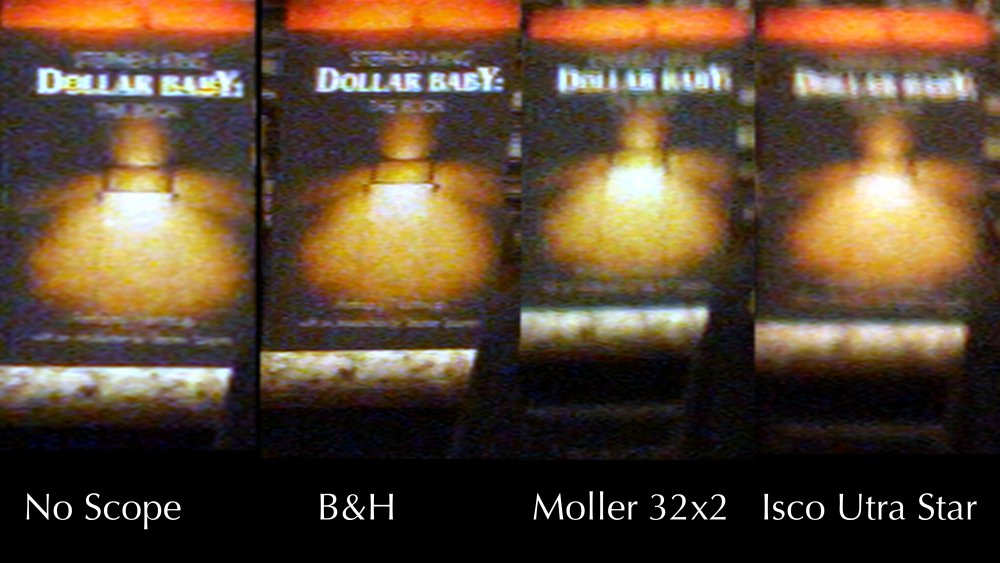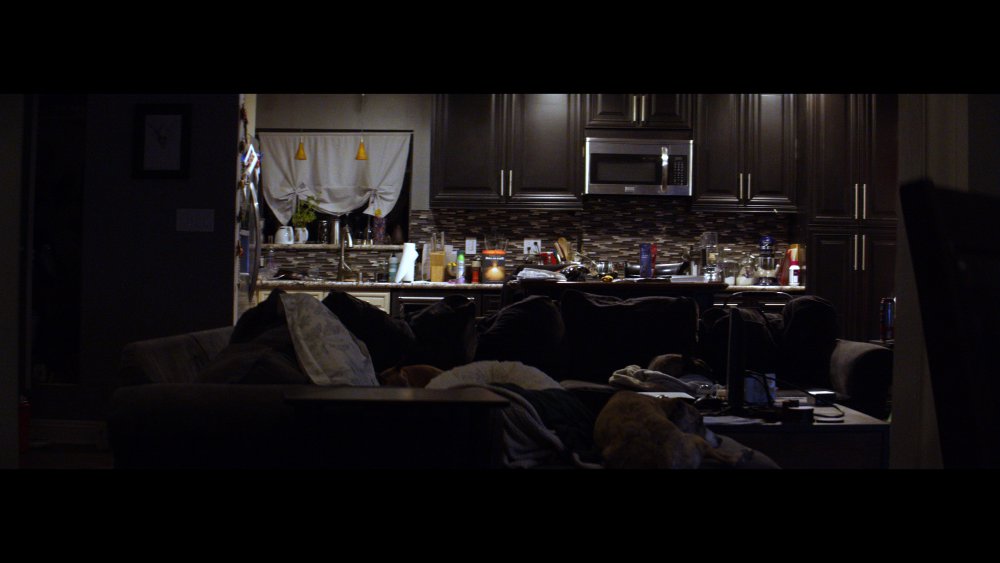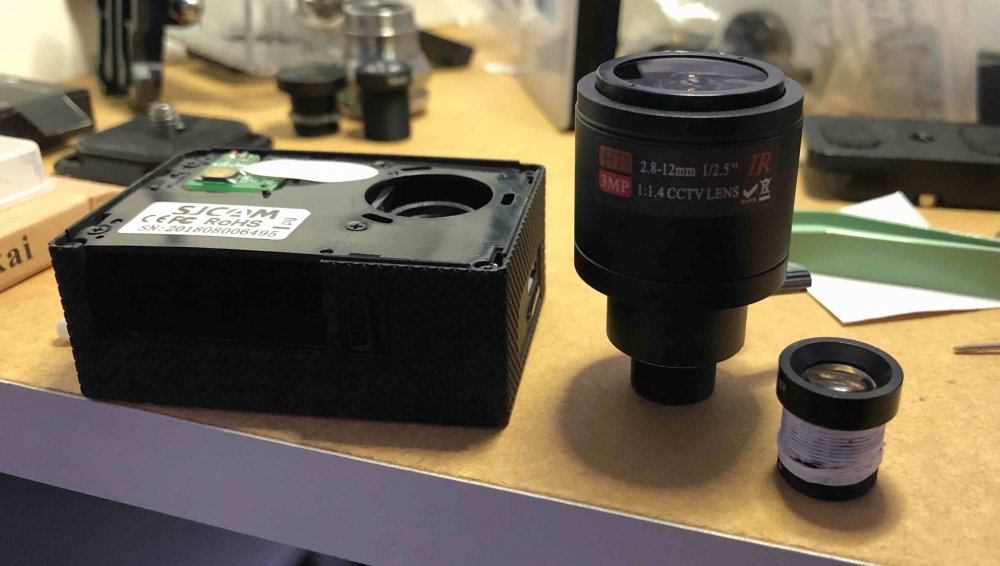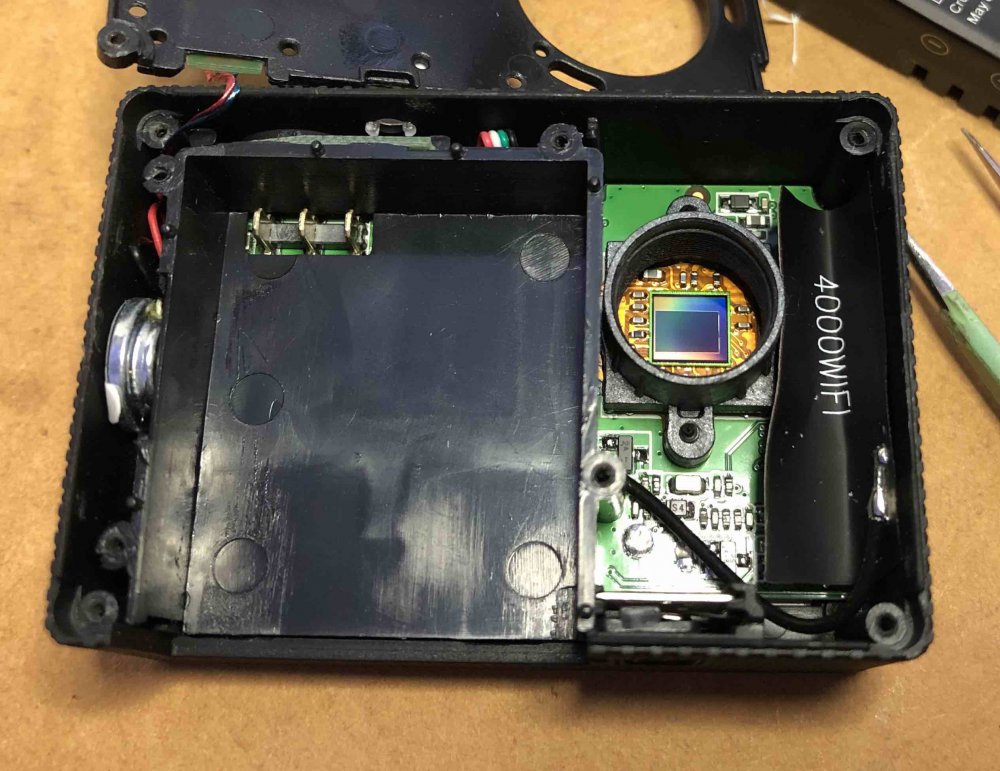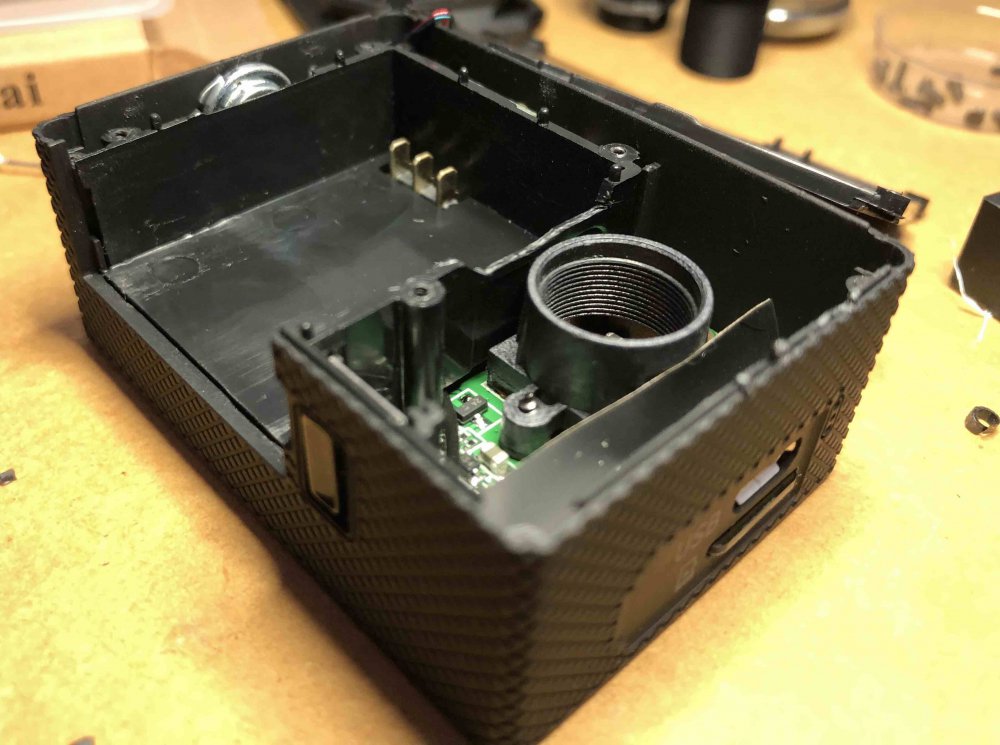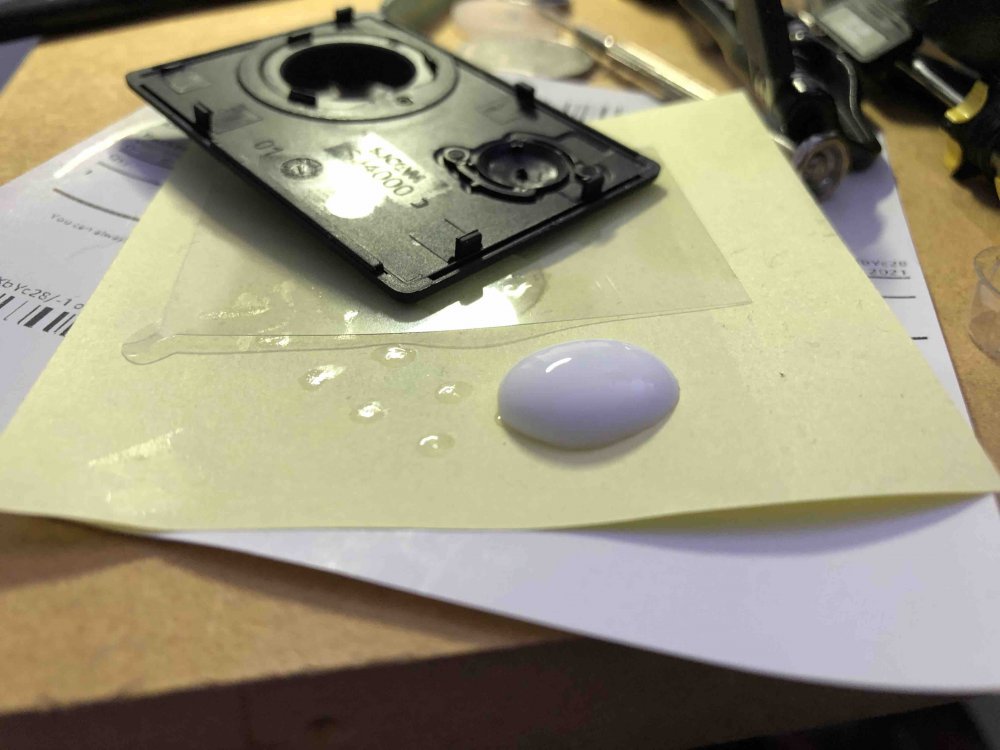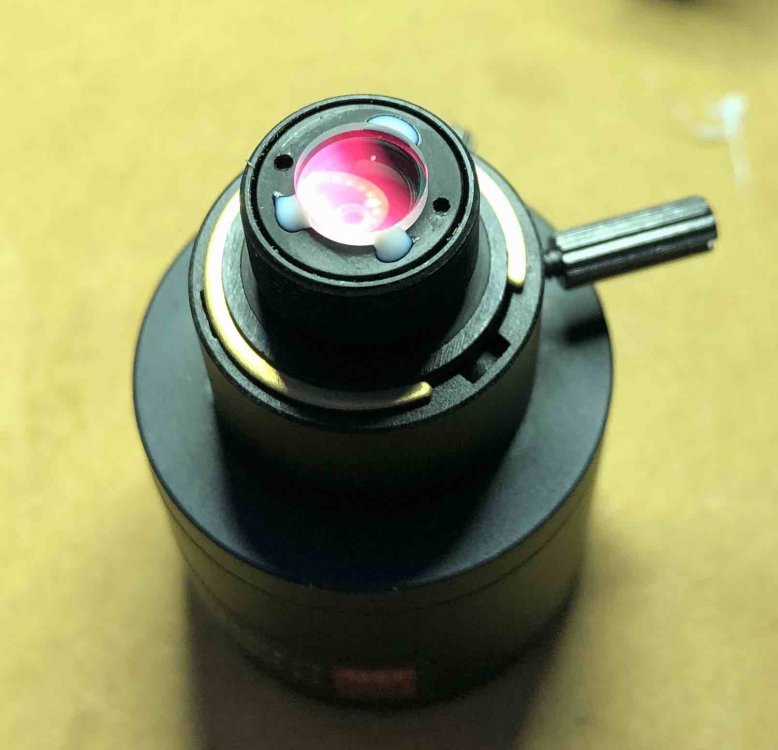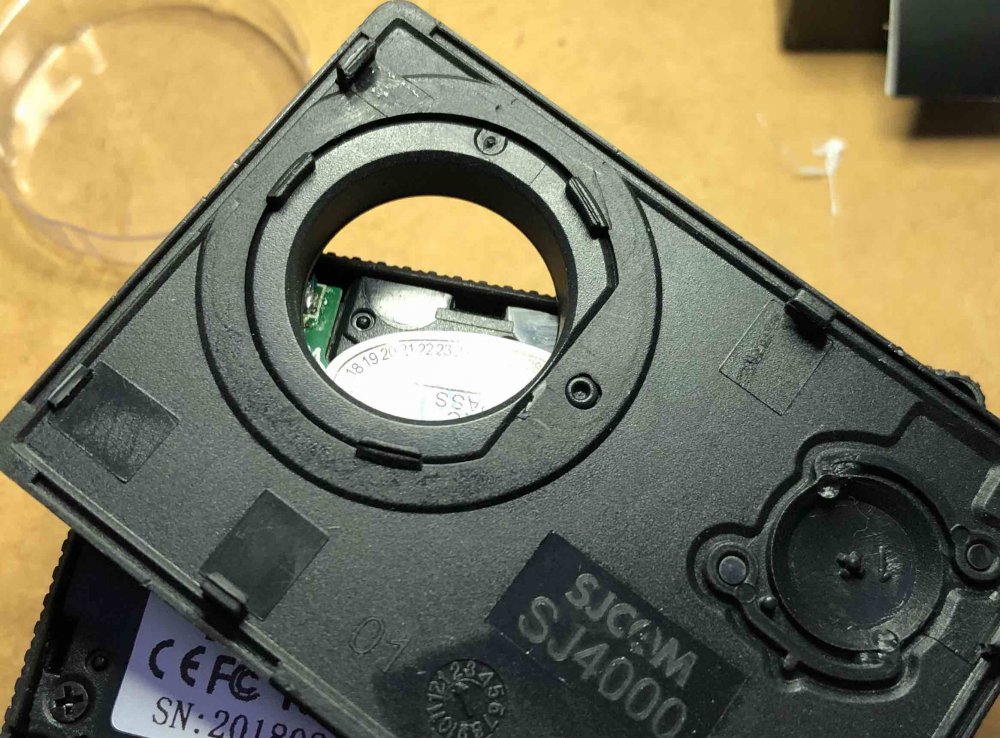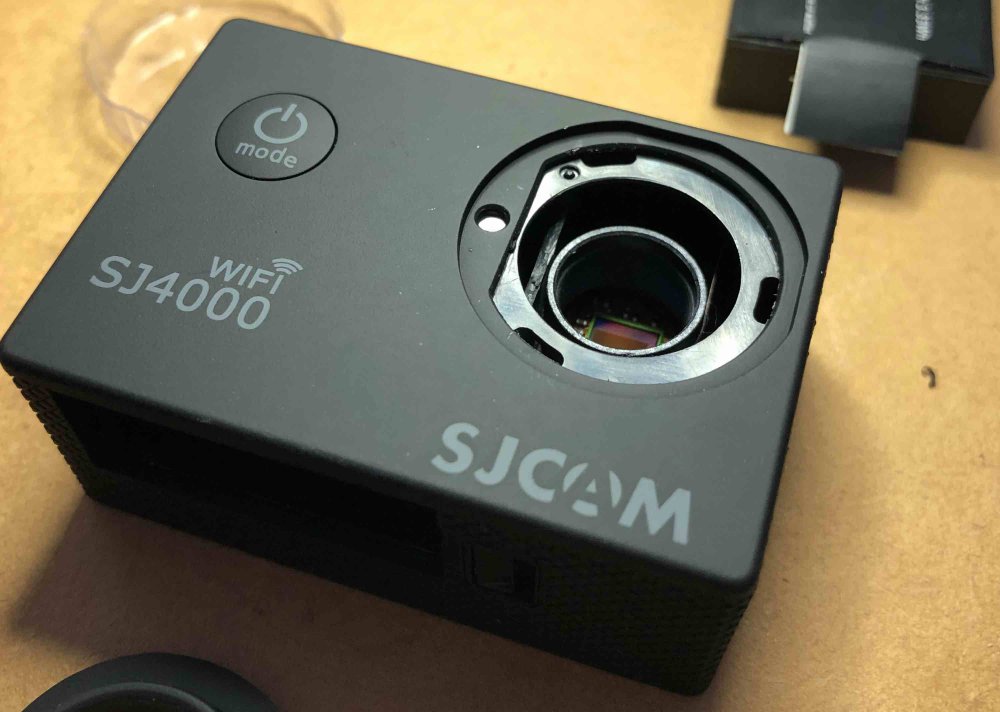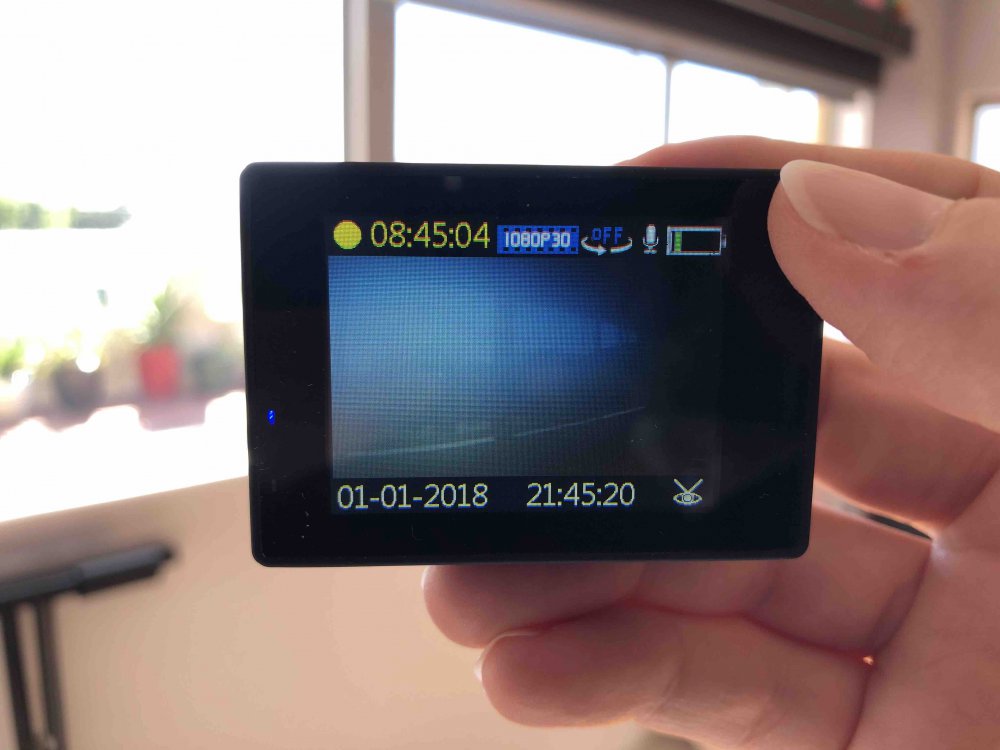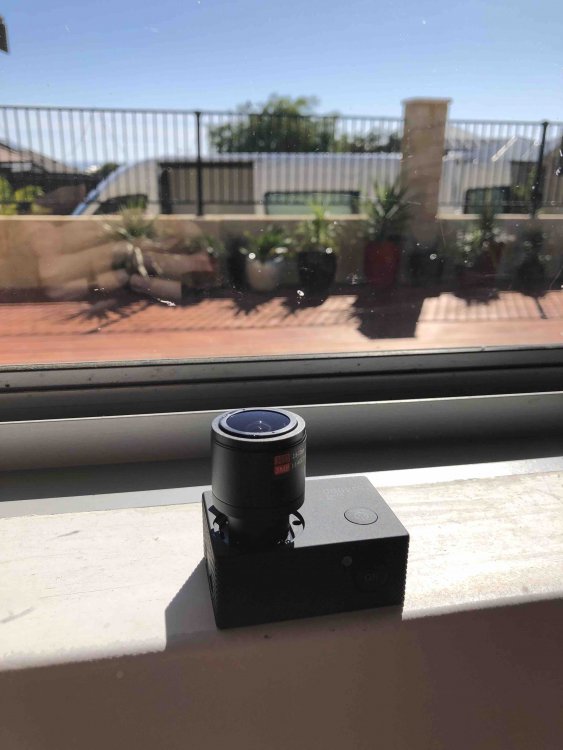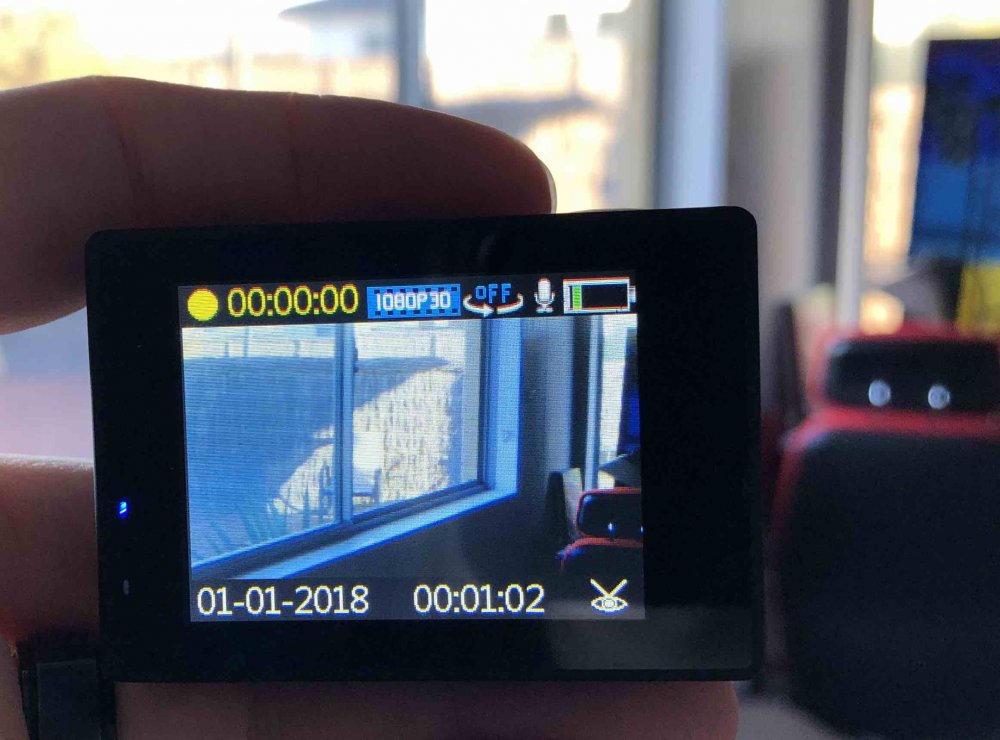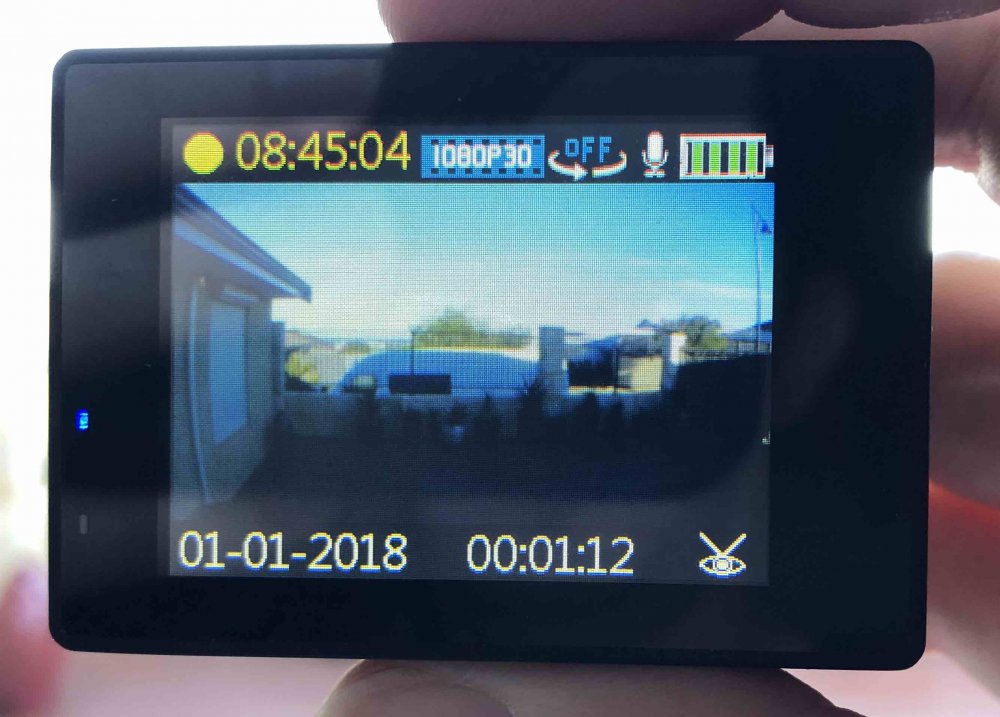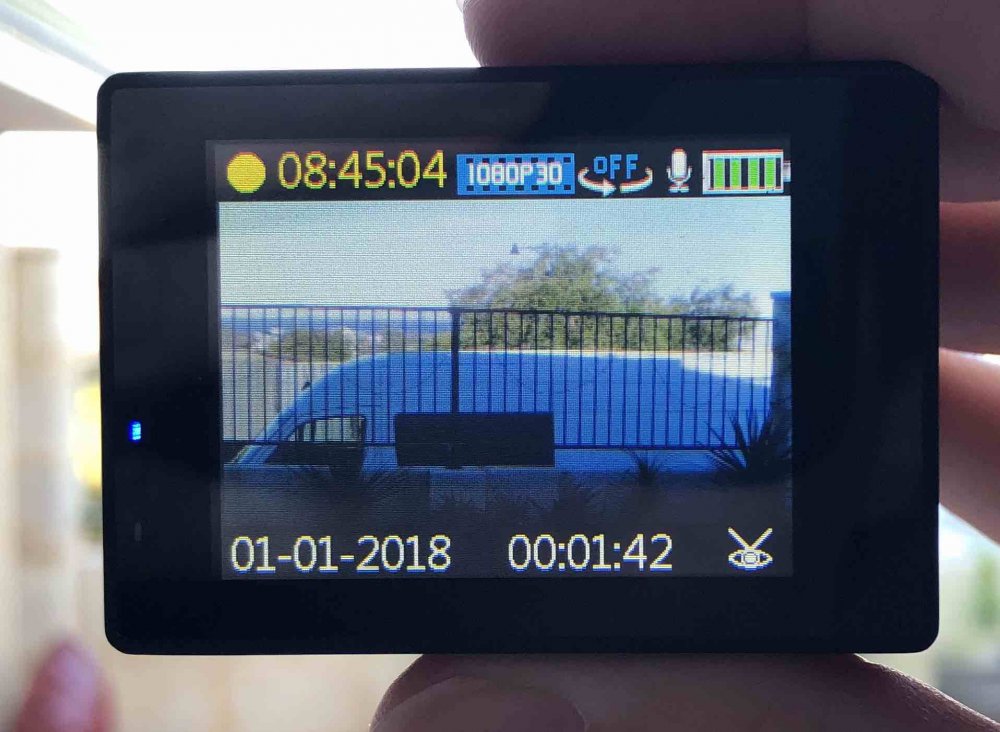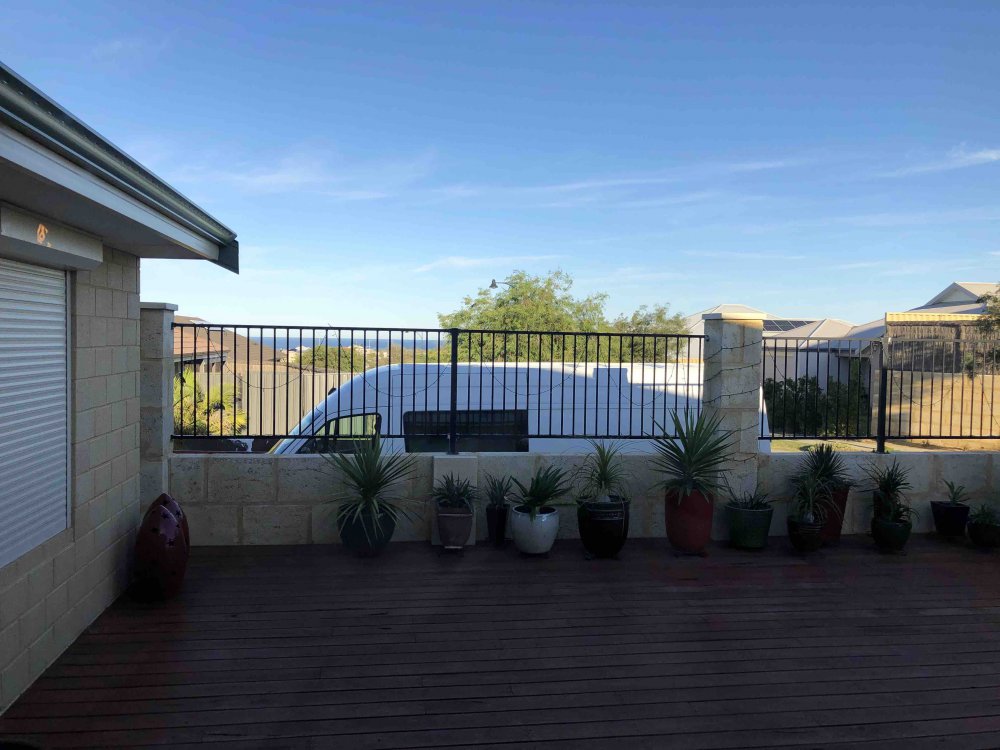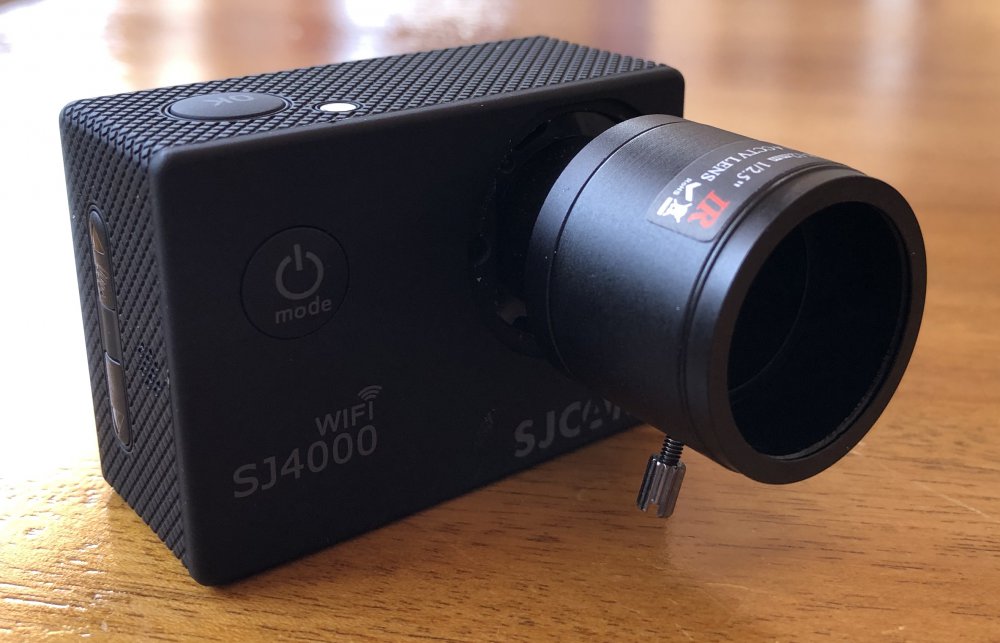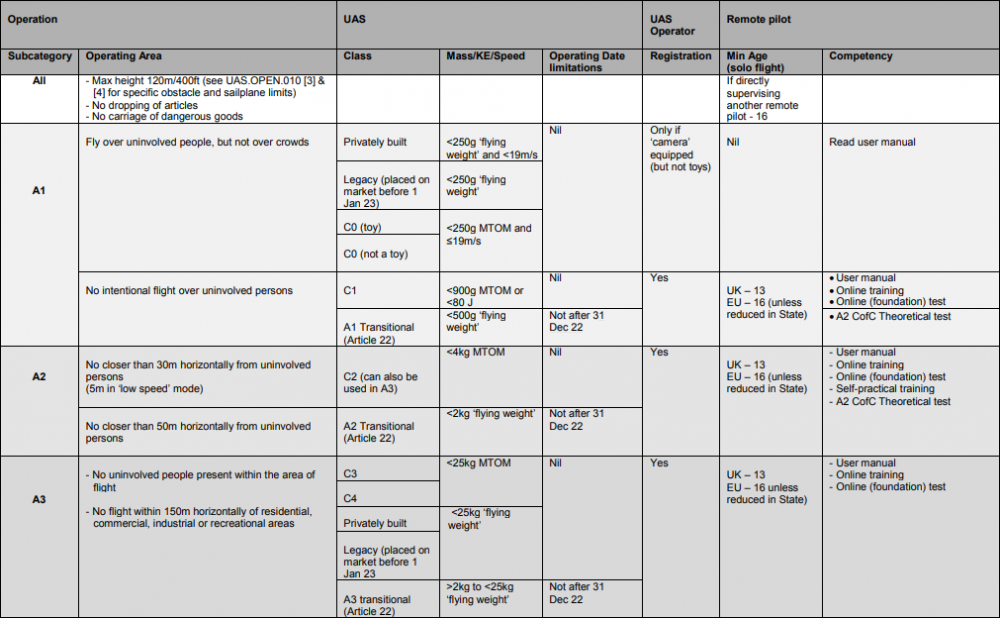Leaderboard
Popular Content
Showing content with the highest reputation on 03/19/2021 in all areas
-
No. Colour depth is bit-depth. The wikipedia entry begins with: Source: https://en.wikipedia.org/wiki/Color_depth2 points
-
1 point
-
Hey kids, my perfect camera would have been a Lumix G6 with a 100mbit codec. I love the HD coming from it. Once graded, it really looks organic to me. Just the shadows become super blocky in low light due to the light codec. Maybe I could get a GH4 for cheap and treat it like my super G6.:) My Lumix S1 is an image powerhouse. But sometimes I dont feel it challenging me but giving away a great image to easily. The G6 always gave me great pleasure in giving me an image I had to work for hard. My dearest camera still. I shot this years ago but still remember the profile settings. Here it goes, natural with contrast 0, sharpness, noise and colour at -2. Graded the heck out of it with crazy curves. Lens was the cheap and awesome Canon 28mm 2.8 and a focal reducer.1 point
-
Lens Weight
Belle reacted to zerocool22 for a topic
Hello, How come that these panasonic L lenses are so light weight? All my canon L glass is heavy as *@#$, same as sigma ART lenses and tamron lenses. Those light weight lenses are a lot funner to carry around 😄 I thought perhaps it was a mirrorless thing, but these Canon RF lenses are heavy beasts as well. Cheers1 point -
So as I'm getting ready to start shooting my micro budget feature, I decided to do a final test between those 3 scopes and a Voigtlander 40mm F2 as taking lens, wide open at F2. Well, I was surprised. I used the cover of a book at 40 feet. The scope I expected to perform the worst, in fact was the sharpest of all three. I could read the title from 40 feet away. Here are the picture.1 point
-

4k dci vs normal 4k
KnightsFan reacted to tupp for a topic
If you (and/or your client) like the aspect ratio and like the fact that you are using a wider portion of the image circle of your lenses, then, to me, those are the most important considerations. So, you are probably best shooting at 4096x2160 (DCI 4K) and down-converting cleanly to 2048x1080 (DCI 2K) or less cleanly to 1920x1013. Any extra rendering time for the odd height pixel in the "less clean" resolution would likely be minimal, but it would probably be a good idea to test it, just to make sure.1 point -

The Thread for Good Deals and Discounts
IronFilm reacted to homestar_kevin for a topic
Hey all, I grabbed both these lenses the last few weeks as funds allowed. Definitely a great deal going at adorama on Nikon Mount Rokinon Cine lenses. $220 for the 14mm 2.8 and $230 for the 24mm 1.4 $230 for a new 24mm f/1.4 is insane to me. https://www.adorama.com/rkcv14mn.html https://www.adorama.com/rkcv24mn.html They're on sale for all mounts, but that Nikon mount is really cheap right now it deserves mention!1 point -

Lens Weight
zerocool22 reacted to MrSMW for a topic
The 85mm f1.8 is actually lighter than air. So is the 20-60mm. I prefer the new Sigmas however, particularly the f2 35mm and 65mm siblings, plus the 45mm f2.8...which I have no use for owning the new 28-70mm f2.8. Heavier yes, but that's because they are made out of a substance called metal and not recycled recycling receptacles. They look ace, they feel ace, they render ace.1 point -
You're making progress, but haven't gotten there yet. Please explain how, in an 8K image with banding, an area with dozens/hundreds of pixels that are all the same colour, somehow in the downsampling process you will get something other than simply a lower resolution version of that flat band of colour?1 point
-
There are too many m43 lenses around to let the format just die..I doubt Panasonic will make more money from their full frame mount, which until now semi-fails to make a stronghold in the market. Also, Olympus is not quite dead yet, there have been some recent releases on lenses (?) I believe and some plans for a camera release. When the tiny sensors are OK for most people in the world (phones/, I see that there is potential for the much bigger m43 one. A video workhorse GH-6 with less mass and weight for 1.999€ maybe is what most people need at the moment. I still see people using professionally their GH5 around. I can see a future for m43, a pro level camera every 5 years and a new cheap model every 2and a half (and keep just 3 product lines, very cheap - 599$ new, 999$ middle level, and 1599$ - 1.999$ pro level, depending the extras such e-ND, audio ports, e.t.c). It is a good platform and unlimited cheap lenses around.1 point
-

American Cinematographer Special Offer
Emanuel reacted to Tim Sewell for a topic
I've read quite a bit of stuff on there in the past, but this was the piece I read just prior to subscribing: https://ascmag.com/articles/clockers-lee-sayeed?fbclid=IwAR13fMTIFuI_YENtrEBVtJQPvN3e-JUFv-61QmfazqxfDKWNWIhBY-0xdmk 'I'm also not particularly interested in hearing about what people do just because they're famous.' Well sure, but what's compelling, I find, is reading about how people at the very top of their game choose what they're going to do and how they're going to do it. The stuff in the piece referenced about the DoP's film stock choices, for instance, has relevance to how we (me and @kye, for instance) as enthusiasts, can approach our shooting and grading to achieve different effects and moods. Will reading stuff like this make us better film makers? Maybe. Is it worth learning how committed, creative professionals go about their work - I'd say definitely twenty bucks' worth, probably more.1 point -
Half makes me wonder if I should hold onto my OG BMPCC for a while longer rather than selling it.... but then again, it's been a long time since I last shot with it!1 point
-
An update... My 2.8-12mm zoom lens arrived and I've completed the mods. It's a nail-biting tale of daring and disaster, but as sure as Hollywood using action cameras with zoom lenses, has a happy ending nonetheless. First impression was that the envelope with the single layer of bubble wrap that was protecting the lens had lost its air long ago, probably while still in mainland China, but concerns of damage were quickly alleviated when I discovered this this is a beast, is heavy, and is made completely of metal. It's also somewhat larger than I anticipated.. here it is next to the camera and existing 8mm lens: I put it onto the camera and couldn't get focus, even if I screwed it all the way in. Naturally, my first impression was to take the camera apart, and modify it to get infinity focus, however it later turned out that this was wrong, and that I had screwed the lens into the camera too far, but back to me going down the wrong path... Camera in pieces: The bit I chopped off thinking it was the only barrier between me and cinematic goodness: It was around this time I realised my error, and that the lens got good focus (across the whole zoom range) with only 2 turns of the lens into the mount. This meant that clearance between the rear element and the sensor wasn't in danger, so I installed the IR Cut filter onto the rear element of the lens. Luckily this lens had a flat rear-element, which made getting the IR filter also flat quite a straight-forward process. I found success with the previous lens by using PVA woodworking glue, which dries clear and holds the IR filter securely (which I accidentally tested by dropping that lens ~1m onto a tiled floor and it stayed on just fine!), so here's the filter: I applied the PVA with a pin and I find that if you give yourself a big lump of glue then you can tell how quickly the glue dries by watching your lump dry, which isn't required in this case but is useful if you glue somewhere that you can't see: Next job was to modify the front plate to allow the lens to sit where it needs to. In this case the front part that clips in needs to be removed: It comes out easily and looks like this when mounted back on the camera: You can see that the mount in the camera is only plastic, which is quite concerning for robustness, but it also presents another problem, which is that the focus and zoom controls on the lens are stiff in parts of their range, and the lens would rather twist in the mount rather than adjust, so my previous trick of putting plumbers tape into the threads did nothing. This is where the story takes a turn - I decided to glue the lens into the mount. I did this for a few reasons. Firstly, this lens give the focal range I need and so I wouldn't need to change it ever again. Secondly, it will help resist turning in the mount, and will also make the whole thing more robust. In terms of risks, I figured that if I needed to remove the lens for some reason I could potentially break the seal on the glue and get it out. If that didn't work then I might break the lens thread in the camera, but maybe not enough to prevent other lenses being used that go deeper into the camera (the previous 8mm lens I had in there went in quite a way). There was never going to be damage to the new lens as it's all metal, including the mounting threads. Worst-case is I kill the SJ4000, which was under $100, and could be replaced. So, I went for broke, and put in quite a lot of glue, both onto the lens and the mount. I made sure to dry it lens-down so that any squeeze-out would drop down the outside of the lens rather than on the inside of the lens mount and potentially onto the sensor. I waited until my lump of glue was completely dry, and then put a battery in and fired up the camera. Disaster. You will note that the windowsill is in focus, so the diffusion is not from poor focus. I suspected some kind of haze from the glue, considering it was fine with the lens installed prior to my glue-up. I have a theory about haze. If something can become a gas and then solidify onto a surface, then it must be able to become a gas again and everything that condensed should evaporate again leaving a clean surface. Assuming that it doesn't perform a chemical reaction or anything. I thought that PVA is water-soluble, so I figured that the haze could simply be condensation, considering that the little chamber between the lens and sensor would have been where a lot of the water would have gone. First attempt to cure it was the late afternoon sun: I pulled the battery and SD card after taking this shot, to remove power and the possibility of them being damaged, and to also let more air in and out via those openings in the case. After sunset I fired it up again and the haze had turned into evenly spaced strange little globs, maybe 10 across the width of the sensor. I didn't get a photo of that, but I thought that movement was good, showing that whatever it is isn't stuck there forever. I left it there overnight and thought I'd contemplate the next strategy the next day. The next morning..... BINGO! Like a phoenix rising from the ashes! I suspect dry air from the air-conditioning gave it the time required to dry out. So, having flirted with disaster but avoiding peril with great skill luck, what do we now have? FOV at wide end: FOV at long end: iPhone 8 FOV: My completely non-scientific analysis suggests that it's about equivalent to an 18-60 lens, and the f1.4 aperture should mean that exposures are good until the light gets low, which is good because the sensor is likely to have poor ISO performance. So, how is it to use? Well, if there was a competition for least par focal lens in the world, this would be my nomination. Each end of the zoom range has its infinity focus setting at each end of the focus range, and if you go from being in focus at one end of the zoom range and take the zoom adjustment to the other end then the bokeh balls are 1/6th the width of the frame (I did measure that) so it's not a subtle effect. I checked if the zoom and focus rings should be locked together but they deviate slightly over their range. The locking pins are useful for controlling the zoom and focus, but if you screw them in completely then they lock the controls, so I'm thinking that I should glue them in place so they're solid. I'll have to be careful not to get glue into the mechanisms but that shouldn't be too hard. So, how the @#&@#$ do you focus using the 2" 960x240 LCD screen? Why, by using the up and down buttons on the side to engage the 4x digital zoom function of course! In terms of natural diffusion and flares, the lens also looks promising, and I've already noticed a round halo if you put a bright light in the centre of frame, so that should be fun to play with. There's probably little chance of this lens ending up in the clinical lens thread! I've matched the colours to the BMMCC via the test chart, so already have a nice post-workflow for it too. I haven't shot anything with it, but will do soon, and considering its size it should be quite easy to film in public without drawing too much attention. So, is it a pocket cinematic beast? Only time will tell.1 point
-
Actually, no. You've managed to build half of an understanding of how these things work. Answer me this - if I take a camera and shoot it in 8-bit 800x600 and I shoot the sky and get banding, then I set the same camera to 8K 8-bit and shoot the same sky, why do I still get banding? Your newspaper example is technically correct, but completely irrelevant to digital sensors as the method of rendering shades of colour is completely different.1 point
-

Help me on an eBay hunt for 4K under $200 - Is it possible?
Jimmy G reacted to Andrew Reid for a topic
Nope.1 point -
Sigma EVF-11... Looks like a masterpiece of design to me
Juank reacted to Caleb Genheimer for a topic
Please have an open gate raw mode!1 point -

Thinking of an idea for a new EOSHD Challenge
Andrew Reid reacted to QuickHitRecord for a topic
Good news for me, bad news for my camera cabinet. Looking forward to this.1 point -
I’m glad at least sigma is pushing the envelope. Wasn’t the whole point of short flange distances to make lenses like this? Maybe this will put pressure on Sony to reduce the weight and size of their zooms. They still seem to be about identical to the a-mount stuff.1 point
-
Help me on an eBay hunt for 4K under $200 - Is it possible?
IronFilm reacted to TrueIndigo for a topic
Yes, I was thinking of the older cameras which only shoot FHD as their native resolution. I remember years ago doing an UHD upscale of some FHD footage from the old Nikon D5200 which looked quite pastel and smooth with some careful noise reduction. I think that camera used a Toshiba sensor and had a nice cyan tint to it which I liked. Later I bought the D5500 to pair with it, but it was quite different from the earlier camera, looked more generic, more modern I suppose.1 point -
Anyone watching the P2K sales on Ebay will realise these things are going up in value like a Banksy going through a shredder...1 point
-
American Cinematographer Special Offer
Kisaha reacted to zerocool22 for a topic
If this was the print version, that would have been even more amazing. I must be really getting old as I prefer reading things written on paper. (allthough I find print obsolete and a waste of good resources)1 point -
That's absolutely irresistible! WOW One of the most appealing no-brainer offers I've ever seen... Mate, if your posts were one of my favs before, guess now ; ) Your life is already duplicated per se for this sharing, mark my words! : D This is what makes this community a unique case worldwide @Andrew Reid :- )1 point
-
IMX800 1-inch sensor — Are we nearing the end of dedicated consumer cameras?
Emanuel reacted to JurijTurnsek for a topic
One of the more striking changes that the smartphones brought, is that the 23mm-ish FOV is now the new "normal" and everything above it labeled at "tele".1 point -
IMX800 1-inch sensor — Are we nearing the end of dedicated consumer cameras?
Emanuel reacted to Video Hummus for a topic
My iPhone is awesomely convenient, but the god awful flaring of light sources, especially at night, ruins it for me...and the plastic skin tones, and the flickering HDR auto modes, and the clunky controls when I want to manually control anything, and the ergonomics in my hand. I'm not that convinced smartphones are going to eat everything or that traditional cameras will be regulated to a niche of a niche geek obscurity. Video is exploding. Production values are going up. Technology is advancing on all fronts.1 point -
What I usually do is to open the image in PS and stretch it down to 50% horizontally and the crop 50% top and bottom. That's it. Beware that with most anamorphic lenses, when you focus at the closest possible distance (ie. 2m), the squeezing factor maybe reduced to lower than 2x, like 1.8x or so. So if you desqueeze your image by 2 times you might find that the people in the image look fatter than they should be.1 point
-
Along the transition span and without CofC theoretical test and while manufacturers don't have retrospectively CE class marked their birds to benefit them at least to fly closer to people without needing a standard permission, I think there's no much advantage to any aircraft under 500g for now in any way other than as not requiring online training and foundation test. Here is the transition period well explained: https://www.easa.europa.eu/faq/1165081 point
-
Low cost monitors for editing HDR video?
Jimmy G reacted to androidlad for a topic
You could, totally, for non-professional use. HDR is more than just a wide gamut. There's peak luminance, intraframe contrast, tone-mapping etc.1 point -
Low cost monitors for editing HDR video?
Jimmy G reacted to androidlad for a topic
BT.2020 for now (and for the near future) is only used as a container, the actual encoded gamut for HDR is P3 D65.1 point -
Low cost monitors for editing HDR video?
Jimmy G reacted to androidlad for a topic
Dell UP2718Q is a proper HDR monitor with FALD, about $1500. The new Atomos Shogun 7 also uses FALD and costs $1500.1 point -
4K has 4 times the color depth (and 4 times the bit rate) of full HD, all other variables being equal and barring compression or any artificial effects.-1 points
-
Well, this scenario is somewhat problematic because one is using the same camera with the same sensor. So, automatically there is a binning and/or line-skipping variable. However, barring such issues and given that all other variables are identical in both instances, it is very possible that the 8K camera will exhibit a banding/posterization artifact just like the SD camera. Nevertheless, the 8K camera will have a ton more color depth than the SD camera, and, likewise, the 8K camera will have a lot more color depth than a 10-bit, 800x600 camera that doesn't exhibit the banding artifact. Of course, it is not practical to have 1-bit camera sensors (but it certainly is possible). Nonetheless, resolution and bit depth are equally weighted factors in regards to color depth in digital imaging, and, again, a 4k sensor has 4 times the color depth of an otherwise equivalent Full HD sensor.-1 points
-
Nope. Color depth is the number of different colors that can be produced in a given area. A given area has to be considered, because imaging necessarily involves area... which area necessarily involves resolution. Obviously, if a 1-bit imaging system produces more differing colors as the resolution is increased, then resolution is an important factor to color depth -- it is not just bit depth that determines color depth. The above example of a common screen printing is just such an imaging system that produces a greater number of differing colors as the resolution increases, while the bit depth remains at 1-bit. The Wikipedia definition of color depth is severely flawed in at least two ways: it doesn't account for resolution; and it doesn't account for color depth in analog imaging systems -- which possess absolutely no bit depth nor pixels. Now, let us consider the wording of the Wikipedia definition of color depth that you quoted. This definition actually gives two image areas for consideration "a single pixel" -- meaning an RGB pixel group; and "the number of bits used for each color component of a single pixel" -- meaning a single pixel site of one of the color channels. For simplicity's sake, let's just work with Wikipedia's area #2 -- a single channel pixel site of a given bit depth of "N." We will call the area of that pixel site "A." If we double the resolution, the number of pixel sites in "A" increases to two. Suddenly, we can produce more tones inside "A." In fact, area "A" can now produce "N²" number of tones -- much more than "N" tones. Likewise, if we quadruple the resolution, "A" suddenly contains four times the pixel sites that it did originally, with the number of possible tones within "A" now increasing to "N⁴." Now, one might say, "that's not how it actually works in digital images -- two or four adjacent pixels are not designed to render a single tone." Well, the fact is that there are some sensors and monitors that use more pixels within a pixel group than those found within the typical Bayer pixel group or found withing a striped RGB pixel group. Furthermore (and probably most importantly), image detail can feather off within one or two or three pixel groups, and such tiny transitions might be where higher tone/color depth is most utilized. By the way, I didn't come up with the idea that resolution is "half" of color depth. It is a fact that I learned when I studied color depth in analog photography in school -- back when there was no such thing as bit depth in imaging. In addition, experts have more recently shown that higher resolutions give more color information (color depth), allowing for conversions from 4k, 4:2:0, 8-bit to Full HD, 4:4:4, 10-bit -- using the full, true 10-bit gamut of tones. Here is Andrew Ried's article on the conversion and here is the corresponding EOSHD thread.-1 points


